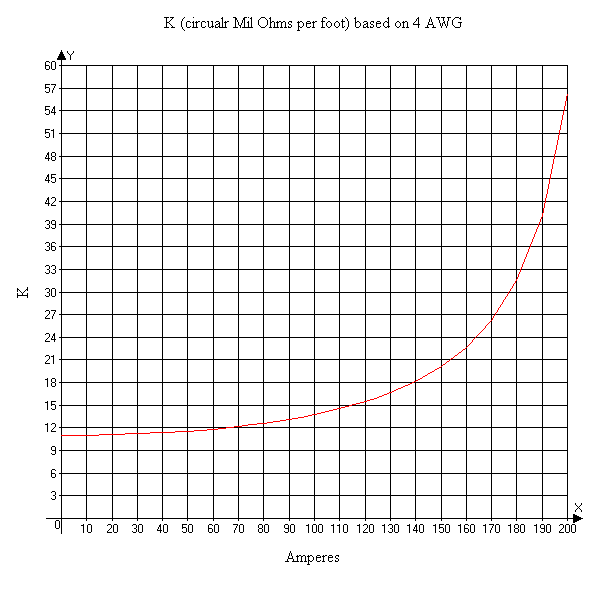Reference Charts



Caution
When using the calculator the conductor's insulation temperature should not be exceeded and this
would mean a maximum of 90 degrees C plus 5 degrees for rounding off since the calculator is intended to
solve voltage drop problems for building wire listed in Table 310.16 of the NEC.
For example for 140 amperes the No. 4 Aluminum conductor temperature is calculated as
600 degrees C. Also, for practical NEC applications any voltage drop calculation must
also be complimented with an ampacity determination usually done by looking up ampacity in Table 310.16.
The calculator was designed for Table 310.16 conductors only and is an approximation since
RCA is calculated using only the 75 degree columns. The conductor temperature should
not exceed the respective temperature for the insulations listed that are 60 degrees C,
75 degrees C. and 90 degrees C. Also the thermal resistance values used in the calculator
were determined using only the 75 degree column. This is not exactly correct for the 60 and
90 degree columns since the ampacity in the 75 degree column that was used in this reverse
calculation method is actually a rounded off value, rounded to the nearest 5 amperes.
A more accurate method would be to determine the thermal resistances from all three columns,
60, 75, and 90 degrees C and then find the average value. Howerver, if the respective
ampacities from each of the columns is used in the advanced calculator the 60, 75, and
90 degree temperatures are fairly accurate. For instance for No. 4 Aluminum 65 amperes
calculates to 75 degrees C, 55 amperes results in 60.7 degrees C, and 75 amperes results
in 93.5 degrees C as the conductor temperatures.
Also, the State of Washington Labor and Industries will not allow the use of this calculator.
They require using the k method with copper K = 12.9
and Aluminum K = 21.2 that assumes a conductor operating temperature of 75 degrees C.





